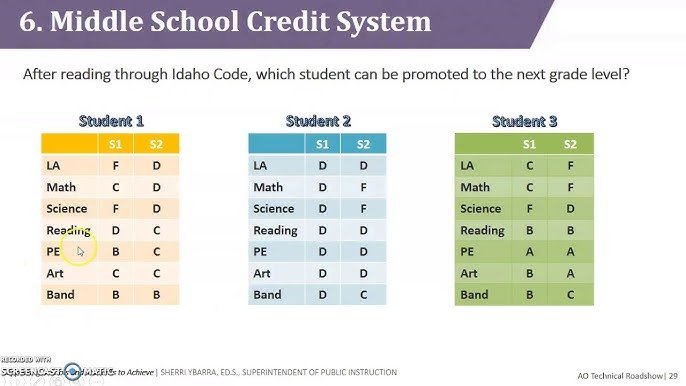Credits are a crucial aspect of any college course, determining the workload and value it holds. To answer the question of how to know how many credits a class is, you should first look at the course description or syllabus provided by the institution. Typically, the number of credits assigned to a class reflects the expected time commitment and level of difficulty. Understanding the credit system is essential for planning your academic journey effectively. Let’s delve into the details to demystify the credit allocation process.
How to Know How Many Credits a Class Is
Welcome to our guide on understanding how many credits a class is worth! Have you ever wondered how to figure out the credit value of a course at school? This article will help you navigate the world of education credits in a fun and straightforward way. Let’s dive in!
What Are Credits?
Before we learn how to determine the number of credits a class has, let’s discuss what credits actually are. In school, credits are a way to measure the amount of work you need to complete for a course. Each course is assigned a certain number of credits based on its difficulty and the time commitment required.
Understanding Credit Systems
There are different credit systems used in schools, such as the semester credit system and the quarter credit system. In the semester system, a typical full-time load is around 12-18 credits per semester, while in the quarter system, it’s around 36-54 credits per year.
Checking the Course Catalog
One of the easiest ways to find out how many credits a class is worth is by checking the school’s course catalog. The course catalog contains detailed information about each course offered, including the number of credits it carries. You can typically access the course catalog online or pick up a physical copy from your school’s office.
Steps to Find Credits in the Course Catalog:
- Locate the course you are interested in.
- Look for the credit value listed next to the course title.
- Make a note of the number of credits for that particular class.
Asking Your Teacher or Advisor
If you can’t find the credit information in the course catalog or have any uncertainties, don’t hesitate to reach out to your teacher or academic advisor. They are there to help you understand the course requirements, including the number of credits associated with each class.
How to Ask Your Teacher or Advisor:
You can approach your teacher after class or send an email to your academic advisor politely asking for clarification on the credit value of a specific course. They will be more than happy to assist you.
Checking Your Transcript
Your academic transcript is another resource where you can find information about the credits you have earned for each course. The transcript provides a detailed record of the classes you have taken, including the credit value assigned to each course.
Steps to Find Credits on Your Transcript:
- Request a copy of your academic transcript from your school.
- Look for the list of courses you have completed.
- Find the credit value assigned to each course.
Understanding Credit Hours
Credit hours represent the amount of time you spend in class each week. Typically, one credit hour equals one hour of class time per week. So, if you have a three-credit class, you can expect to spend three hours in class each week.
Calculating Total Credits
To calculate the total number of credits you need to graduate, you can add up the credits required for each course. Different schools and programs have specific credit requirements for graduation, so make sure to check with your school’s academic policies.
Example Calculation:
If you need 120 credits to graduate and each class is worth 3 credits, you would need to complete 40 classes (120 ÷ 3 = 40) to meet the graduation requirements.
Choosing Your Classes Wisely
When selecting your classes, it’s essential to consider the credit value of each course. Make sure to balance the number of credits you take each semester to ensure you can manage your workload effectively. Don’t overload yourself with too many credits, as it can lead to stress and burnout.
Congratulations, you’ve now mastered the art of determining how many credits a class is worth! By using the tips and strategies outlined in this article, you can confidently navigate the world of education credits and make informed decisions about your academic journey. Remember to always seek guidance from your teachers and advisors whenever you have questions about credit values. Happy learning!
How To See How Many Credits a Class Is On Classpass 2025 – Easy Guide
Frequently Asked Questions
How can I find out how many credits a class is worth?
To determine the number of credits a class is worth, you can check the course catalog provided by your school or institution. The course catalog will list essential details about each class, including the number of credits it offers. You can also reach out to your academic advisor or the department offering the course for accurate credit information.
Where can I locate information about the credits assigned to a specific class?
You can typically find information about the credits assigned to a specific class in the course description or course details section of your institution’s website. Additionally, the syllabus for the class, which is usually provided by the instructor at the beginning of the term, will specify the number of credits associated with the course.
Is the number of credits for a class standardized across all institutions?
No, the number of credits assigned to a class can vary between institutions. Different schools may have different credit systems based on their academic policies. It is essential to refer to your specific institution’s guidelines and course information to determine the credit value of a class accurately.
Final Thoughts
In conclusion, determining the number of credits a class is worth is crucial for academic planning. To find out how many credits a class is, refer to the course catalog or syllabus. This information is typically listed alongside the course title and description. Understanding the credit value of each class helps students select courses that align with their degree requirements. Paying attention to how many credits a class is also ensures proper course load management throughout the semester.





More Stories
Exploring How Many Airport In Las Vegas: Key Facts
Decoding How An Oil Pump Jack Works
Securely Store Your Stun Gun: How To Properly Store Stun Gun